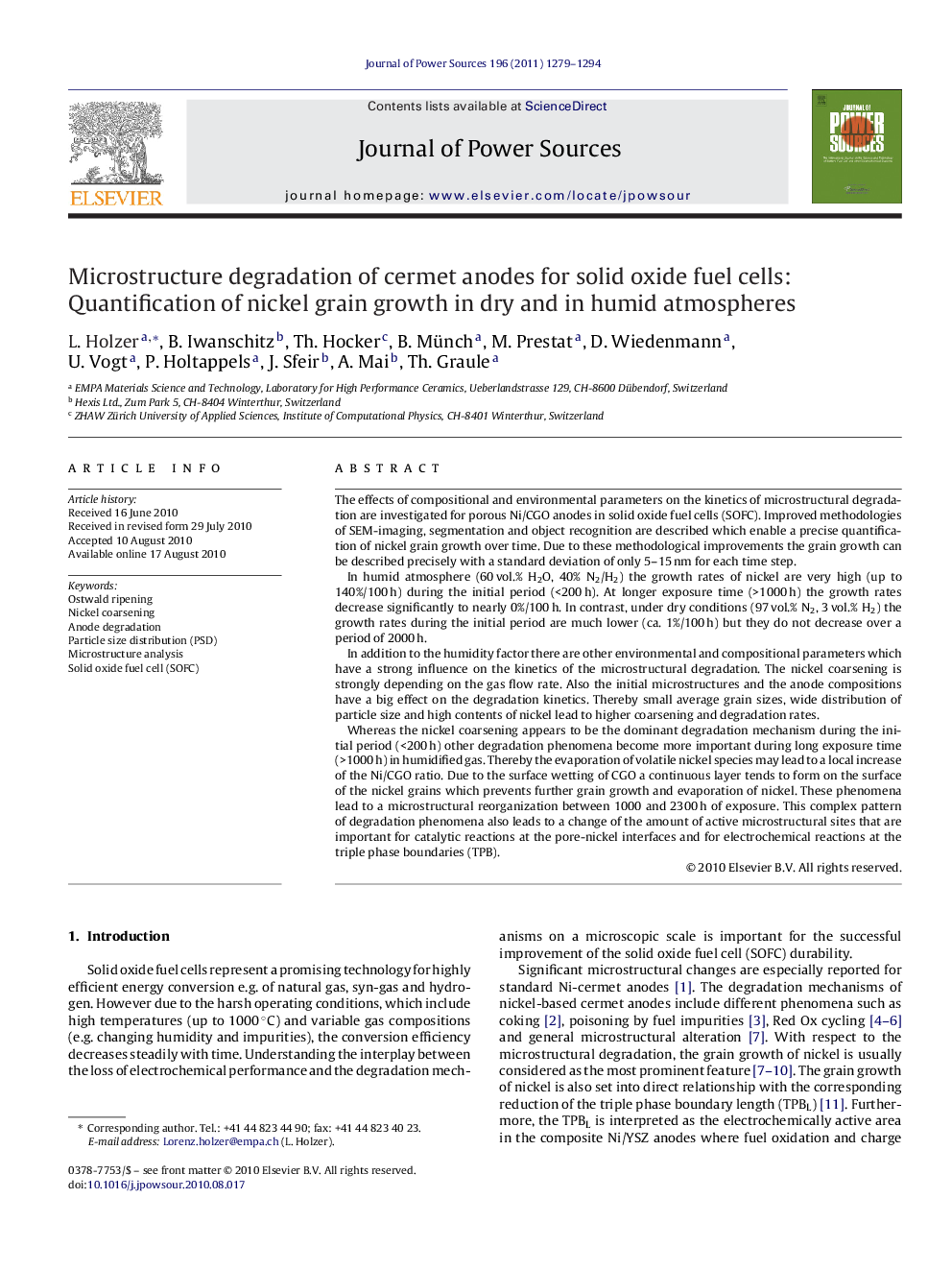| Article ID | Journal | Published Year | Pages | File Type |
|---|---|---|---|---|
| 1289621 | Journal of Power Sources | 2011 | 16 Pages |
The effects of compositional and environmental parameters on the kinetics of microstructural degradation are investigated for porous Ni/CGO anodes in solid oxide fuel cells (SOFC). Improved methodologies of SEM-imaging, segmentation and object recognition are described which enable a precise quantification of nickel grain growth over time. Due to these methodological improvements the grain growth can be described precisely with a standard deviation of only 5–15 nm for each time step.In humid atmosphere (60 vol.% H2O, 40% N2/H2) the growth rates of nickel are very high (up to 140%/100 h) during the initial period (<200 h). At longer exposure time (>1000 h) the growth rates decrease significantly to nearly 0%/100 h. In contrast, under dry conditions (97 vol.% N2, 3 vol.% H2) the growth rates during the initial period are much lower (ca. 1%/100 h) but they do not decrease over a period of 2000 h.In addition to the humidity factor there are other environmental and compositional parameters which have a strong influence on the kinetics of the microstructural degradation. The nickel coarsening is strongly depending on the gas flow rate. Also the initial microstructures and the anode compositions have a big effect on the degradation kinetics. Thereby small average grain sizes, wide distribution of particle size and high contents of nickel lead to higher coarsening and degradation rates.Whereas the nickel coarsening appears to be the dominant degradation mechanism during the initial period (<200 h) other degradation phenomena become more important during long exposure time (>1000 h) in humidified gas. Thereby the evaporation of volatile nickel species may lead to a local increase of the Ni/CGO ratio. Due to the surface wetting of CGO a continuous layer tends to form on the surface of the nickel grains which prevents further grain growth and evaporation of nickel. These phenomena lead to a microstructural reorganization between 1000 and 2300 h of exposure. This complex pattern of degradation phenomena also leads to a change of the amount of active microstructural sites that are important for catalytic reactions at the pore-nickel interfaces and for electrochemical reactions at the triple phase boundaries (TPB).
